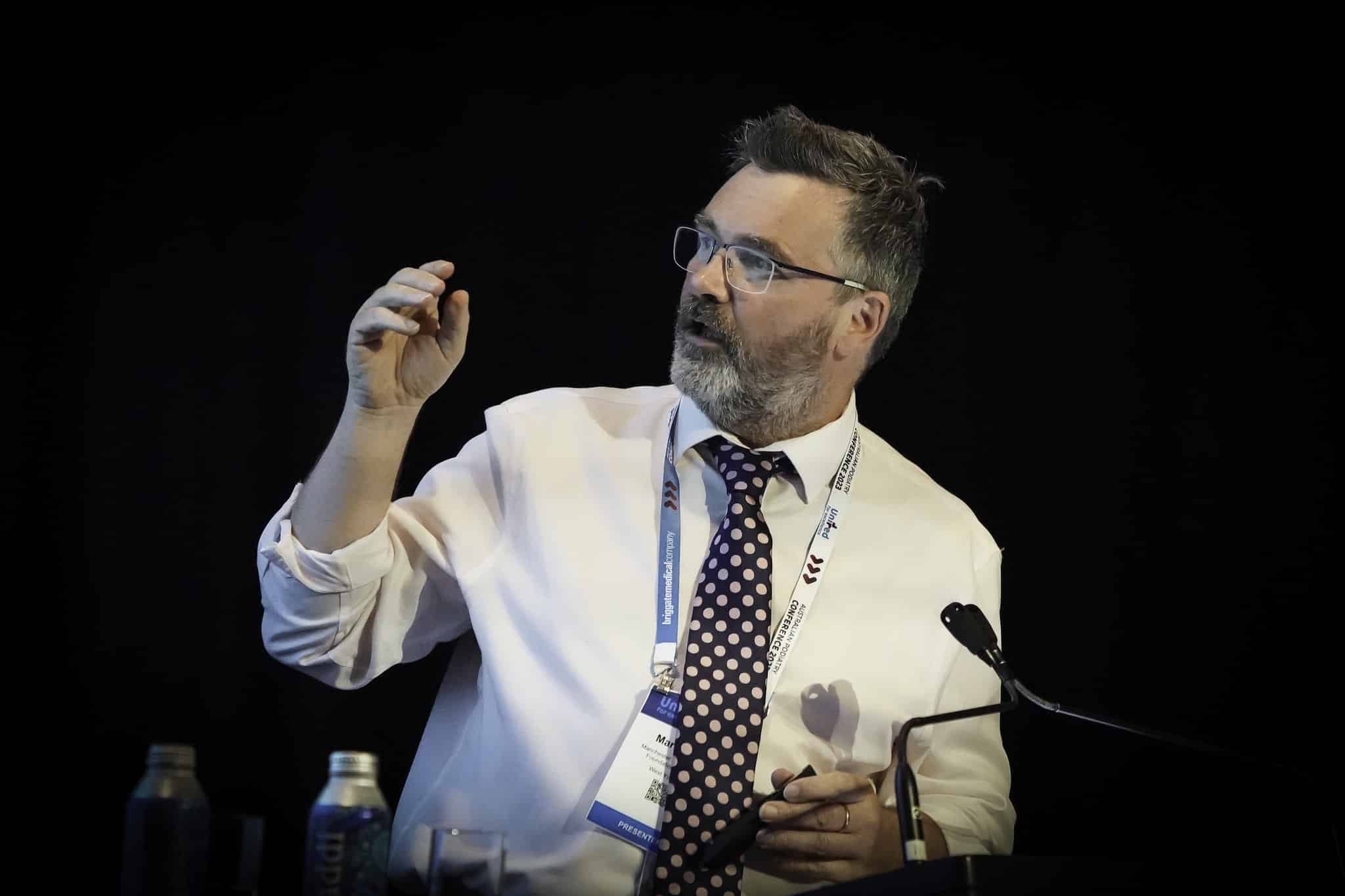
Martin Fox works in an NHS commissioned, podiatry-led, community-based lower limb vascular service in Manchester, England. He comes from a general podiatry and high-risk lower limb career background. Martin spoke passionately to a packed auditorium at the 2023 Australian Podiatry Conference. The topic in question was peripheral arterial disease (PAD) – and the critical role podiatrists play in diagnosing it before it is too late, for life or limb.
How would you respond to the questions Martin asked the conference delegates?
On a balmy Brisbane morning, despite the winter months, Martin Fox posed the following questions to hundreds of Australian Podiatry Conference attendees. These questions followed a long-haul flight Martin made from Manchester, such is his purpose to spread the importance of PAD assessments to all corners of the globe and all types of podiatrist; especially those working in community settings who may not particularly see themselves as vascular champions.
During Martin’s presentation, delegates were invited to stand and only sit down once they answered ‘no’ to the following questions. Around 50% of podiatrists sat in response to question 2C and only three podiatrists remained standing after question 2E was asked.
How did you fare, after reading through these questions?
“We know that as podiatrists, we are potentially able to diagnose lower limb conditions and relieve foot and lower limb pain. But what about aiding survival? How many of us see ourselves as being directly able to prevent heart attacks, strokes, amputations and premature deaths?
We see a lot of campaigns out there about early or critical signs of heart attack and stroke, to raise public awareness, but relatively little is known or promoted effectively to the public about early or critical signs of PAD.
In fact PAD is often ‘played down’ as presenting with mild ailments like cold toes, chilblains and achy legs. Yet PAD is basically heart disease of the leg; claudication is angina of the leg. It needs the same cardiovascular management to prevent the same outcomes. PAD associated heart attacks, strokes and early death are more common than associated amputations.
As podiatrists, we can diagnose PAD and we can champion our role in changing all these adverse outcomes for lives and limbs. Every time you feel a foot pulse, you are tied into that diagnostic journey, with a potentially critical role to play.
The stakes are high. Mortality rates for people with lower limb conditions, such as PAD, are comparable to major cancer outcomes. Yet how many patients know that the pain in their leg might be PAD, putting them at an increased risk for heart attack and stroke? And how many patients know which simple and effective treatments can best help to reduce these risks?
The huge elephant in the podiatry room is that podiatrists come out of university and are able to do complex assessments and interventions involving the feet. Yet we are not utilising simple, structured clinical diagnostics to exclude or confirm PAD, particularly in the population at risk that we see in many of our clinics. How do our vascular skills as a profession fare, compared to global consensus on best assessment?
Studies show that most of us are NOT doing ABPIs and NOT taking toe brachial pressure index tests (TBPIs). Most Australian podiatrists are using pulse palpation and doppler insonation in isolation, as a minimum. This is out of date and unsafe, bearing in mind the ageing and multi-condition population of people that we often see in 2023.
Simple, quick systolic pressure testing in the ankles or toes is NOT being carried out, with the main reasons being given as a lack of time, equipment and / or experience, or confidence.
If we don’t use these skills often, like any skill neglected, we lose them. And yet these tests, alongside pulse palpation plus Doppler insonation, give the most reliable diagnostic accuracy when combined with clinical suspicion.
In short: If pulses are weak and the Doppler sounds whooshy, take some pressures.
History + pulse palpation + Doppler phase insonation + systolic pressures = PAD confirmed or excluded.
The 3Ps assessment approach is quick, simple and backed by consensus in national and international clinical guidelines. To recap:
Adding a systolic ankle or toe pressure to our existing usual vascular checks of pulse palpation or Doppler insonation, can take as little as five minutes per limb, once we are confident with use of Doppler and sphyg cuffs or Photoplethysmography (PPG) sensors.
Improving our skills and habits in using this approach sets us up for building confidence to:
Which leads to our next major challenge as podiatrists: We need to learn how to explain the importance and reality of a PAD diagnosis to people in a way that doesn’t cause fear, but empowers them to make positive changes in their lives earlier in this serious disease. This can effectively help to prevent or delay disease progression.
Podiatrists can play a significant role in directly detecting and improving five-year morbidity and mortality outcomes associated with PAD. The role of a podiatrist can be life-saving as well as limb protecting.”
With Martin’s advice now fresh in our minds, it’s over to you to work towards completing each listed action, from 2A right down to step 2E, as your ongoing goal. This is indeed a relatively simple and worthwhile goal to pursue. Equally important is to share this knowledge widely amongst your podiatry peers.
We just have to give ourselves permission to do this, to reinforce some core skills and build our confidence. We can become the vascular leaders in lower limb healthcare that we really should be.
Further reading to help enable this
© Copyright 2021 The Australian Podiatry Association
